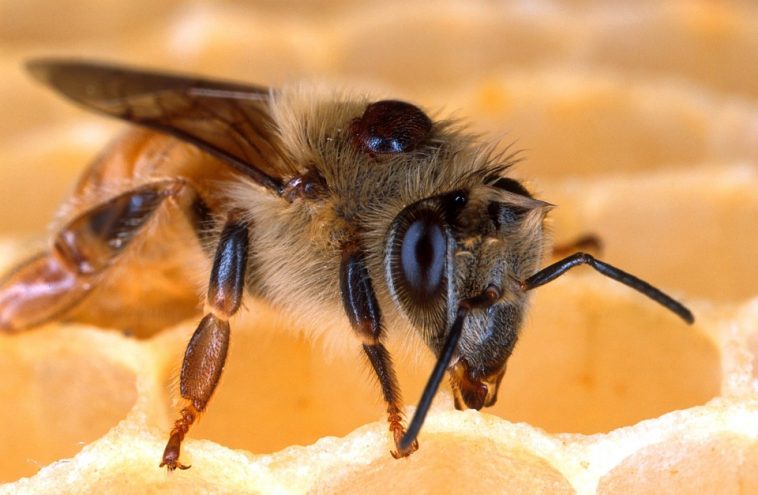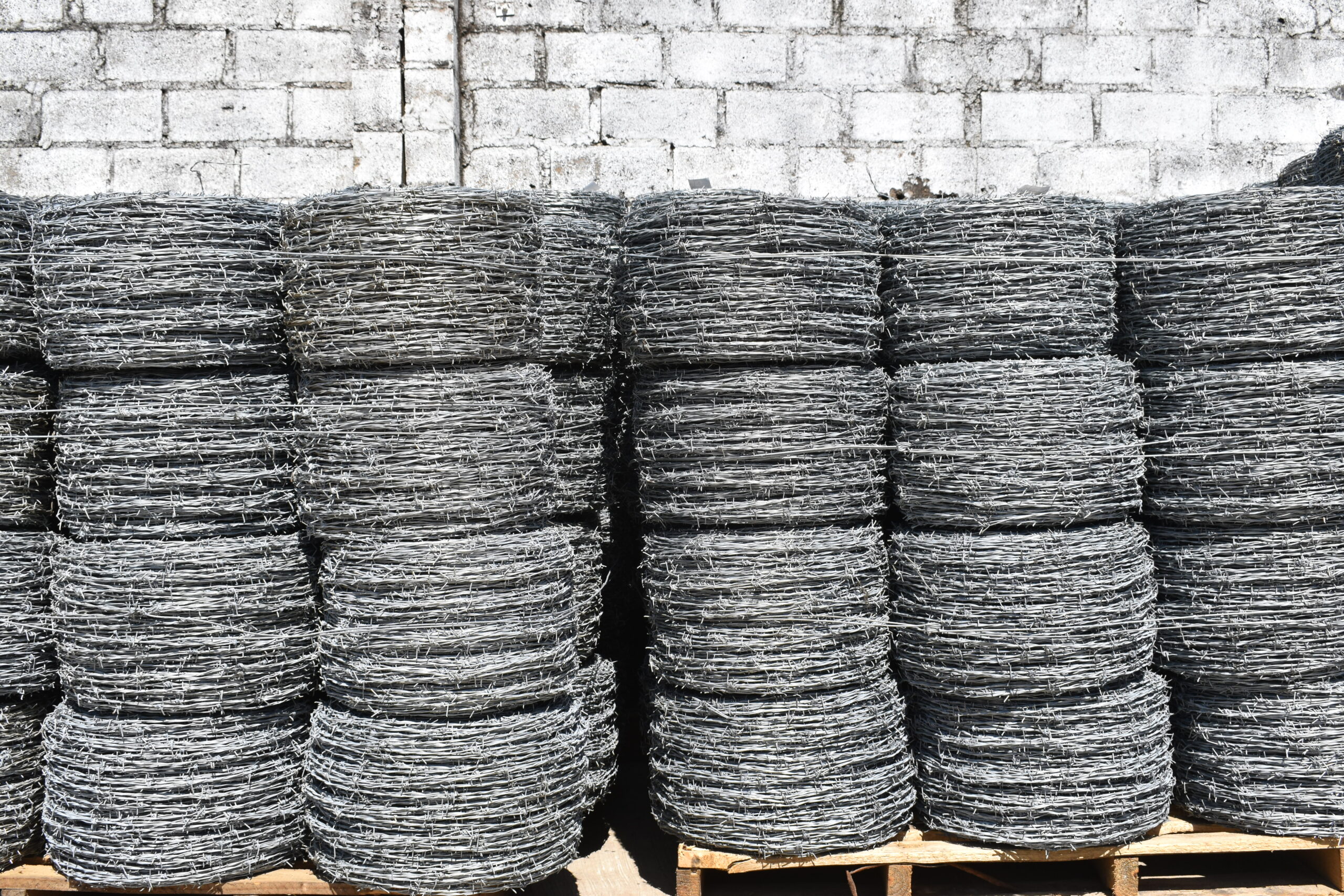Bees are subject to pests and diseases, and beekeepers should be on the lookout for symptoms. In many countries beekeepers are required to register with the relevante authorities and in South Africa, all beekeepers are required to register with the Department of Agriculture and report any diseases to prevent spreading to other colonies.
Since it is difficult to enforce this law, especially among numerous unregistered beekeepers, diseases can spread and cause havoc in the bee industry. Being knowledgeable about honeybee pests and diseases is important for keeping healthy swarms and good quality bee products. Early detection and suitable action will ensure sustainable hives.
American foulbrood
American foulbrood (AFB) is highly contagious and is caused by a bacterial infection inflicted by Paenibacillus larvae. It causes severe losses for beekeepers and is extremely difficult to eradicate. Infected colonies have uneven brood patterns with dark, sticky, and sunken cappings. It also has a ropiness when a stick or match is inserted in the cell and drawn out. The dead larvae smell foul. There is no alternative but to burn the hives to get rid of the infection. This is a reportable disease, and the Department of Agriculture should immediately be informed if an infection is suspected. Specific regulations exist for the removal and destruction of colonies infected with a notifiable disease. Refer to the Government Gazette under References.

Varroa mites inside a cell rob the larva of nutrition.
European foulbrood
European foulbrood (EFB) is a common bee disease in South Africa. Although it is found throughout the country, it is more prevalent in humid areas, like KwaZulu-Natal, especially when the hive is under stress. It is caused by the bacterium Melissococcus pluton, which is ingested by young larvae of about four to five days old through the food they are fed. The larvae multiply in the bee’s intestines, robbing the bee of its nutrition, and the bee dies of starvation even before the cells are capped.
The remains of dead larvae cause more infection. Look out for dead or dying larvae that are curled upwards, yellow or brown in colour, seemingly melted to the sides of the cells, or dried out and rubbery. As soon as any stress is relieved and more worker bees and food forage become available, the infection and the symptoms may disappear, and the larvae can survive. A weak hive can be combined with a healthy, uncontaminated swarm with a laying queen to boost its chances of recovery.
Chalkbrood
The occurrence of chalkbrood, caused by the fungus Ascosphaera apis, has dramatically increased since the discovery of the parasitic varroa mite. The fungus causes chalkbrood, which only attacks larvae. Ingested spores germinate and mycelia grow through the body, penetrating the epidermis and quickly covering the pre-pupa, which dies because of physical damage and because the fungus extracts nutrients. The pre-pupa dries out to form a chalky lump, or mummy, which fits loosely in the cells and can be removed by the bees. They cast the ‘popped rice’ mummies out, which alerts the beekeeper of the disease.

Varroa mites cause malformation and weakening of honeybees.
Nosema
Nosema is caused by Nosema apis, which affects adult bees’ nutrient absorption and gut. This leads to less brood food being produced and can lead to 15% fewer larvae production. Symptoms of heavily infected colonies include clumsy and lethargic bees with swollen abdomens and brown diarrhoea. Although it occurs countrywide, it has not been linked to colony deaths.
Varroa destructor
The tiny red-brown, external Varroa destructor mite is the most serious parasite of honeybees, as it causes malformation and weakening of honeybees. As a result, adult bees are crippled and start crawling; they can not fly properly. The disease has spread from its natural host, the Eastern honeybee (Apis cerana) to the Western honeybee (Apis mellifera). Varroa mites attack adult honeybees and larvae, especially drone larvae. Colonies infested with a lot of them also have problems with other bee diseases and pests, including small hive beetles, chalkbrood and Braula coeca (wingless fly).
These mites cause poor brood patterns and scattered brood, with sunken and chewed cappings and with the larvae collapsed in the bottom or against the side of the cell.

Small- and large hive beetles may enter the hive.
Tracheal mites
Acarine disease in bees is caused by the tiny tracheal mite, Acarapis woodi, which pierces the bee’s windpipe or trachea and feeds on the bee’s ‘blood’. These mites occur throughout South Africa. There are no reliable symptoms of infestation as they can only be detected under a microscope and are like that of Nosema. They may cause disjointed wings, so bees cannot fly but crawl on the ground near the hive.
Wax moth
The larvae of the wax moth (Galleria mellonella) leave a mass of silk trails and can destroy the entire comb, but strong colonies may be able to control the moth population. Infestation by wax moths is less likely to occur in hives at higher altitudes where it is colder. The wax moth is problematic when storing empty boxes without bees.

Varroa mites inside the cells.
Sacbrood
Sacbrood virus (SBV) is a well-known viral bee disease with recognisable symptoms. The larva’s outer layer fills with a clear liquid, while the underdeveloped head darkens. Sacbrood can also be recognised by an uneven brood pattern with sunken, discoloured, and perforated cappings with jagged edges.
Bee paralysis
Paralysis of adult honeybees, which results in the inability to fly and uncoordinated trembling of the body, is commonly caused by viruses. These include the chronic bee paralysis virus (CBPV), acute bee paralysis virus (ABPV) and the Kashmir bee virus (KBV), which is like ABPV. The symptoms of paralysis are the same as with Nosema and pesticide poisoning. Affected bees are usually found on top of the frames but in severe cases, the crawling bees are seen on the hive floor and in front of the hive, and death follows within a few days.

Close-up of a varroa mite.
Others
Other pests that are more of a nuisance than an economic threat to your hives include the small- and large hive beetle, banded- and yellow bee pirates, wasps, the deaths head moth and lesser- and greater wax moth, parasitic flies and nectar flies, and other parasitic mites. Rodents, toads, geckos and lizards, termites, ants, bee scorpions, the braula bee louse, birds, baboons, and honey badgers can all take their toll. And those are in addition to starvation, overheating and chilling of the bees!
This is a summary of the most important diseases and pests, but it is by no means complete and it is a good idea to read more on the subject. The resources mentioned at the end of the article are a good starting point. It is also advisable to join your local beekeeping association and learn from experienced beekeepers. You can also join a Facebook group where fellow beekeepers share their experiences and information.

A hive infected with AFB shows the sticky, black nature and ropiness of the dead larvae.
Contact Mike Allsopp at allsoppm@arc.agric.za
References
Allsopp, M. (2014) Pests and diseases. Agricultural Research Council https://www.arc.agric.za/arc-ppri/Pages/Insect%20Ecology/Honeybee-Pests-and-Diseases.aspx
Anderson, R.H., Buys, B., Johansmeier, M.F. (2014) Byeboerdery in Suid-Afrika. Departement van Landboutegniese Dienste. Bulletin no. 394, 1978
Control measures relating to honeybees. (2013). Agricultural Pests Act 1983 (No 36 of 1983). Government Gazette, No R 858 15 November 2013 Agricultural Pests Act 36 of 1983 | South African Government
Louw, M. (2022) Pests and Diseases of Bees: Beekeeping in South Africa. https://southafrica.co.za/pests-and-diseases-of-bees.html










Can I just say what a aid to find somebody who truly knows what theyre speaking about on the internet. You positively know the right way to bring an issue to light and make it important. More people have to read this and understand this facet of the story. I cant believe youre not more standard because you undoubtedly have the gift.